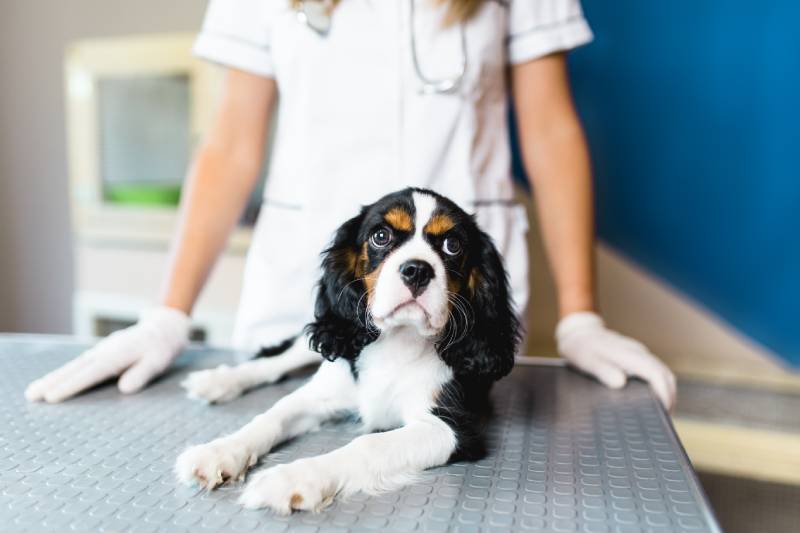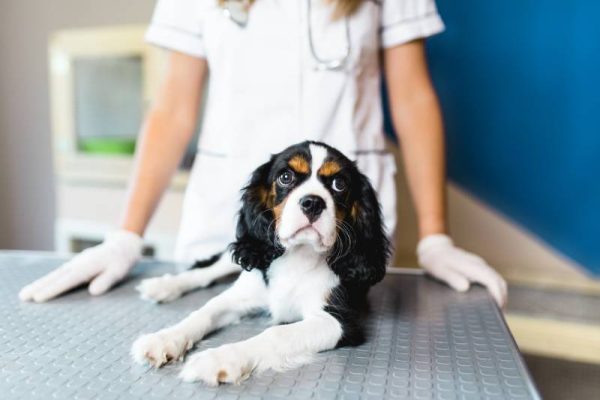If you’re wondering when to get your new Cavalier King Charles Spaniel puppy spayed or neutered, you’ve probably heard a lot of conflicting opinions. You want to do the right thing for your pet, so what’s the correct answer? While you and your vet should work together to find the right time for your dog, Cavalier King Charles Spaniels can be spayed or neutered around 6 months old.
In this article, we’ll talk about why 6 months is the recommended age for this breed, as well as some other points you and your vet should consider before making your decision. We’ll also offer some thoughts on what to do if you’re considering skipping spaying or neutering altogether.
Why When You Spay or Neuter Your Cavalier Matters
Traditionally, vets tended to give one blanket answer when asked what age is best for spaying and neutering: 6 months. Later, animal rescues and shelters started performing this surgery on animals as young as 8 weeks to ensure they were out of the breeding pool before adoption.
However, vets and researchers eventually began to take a more individualized approach to their recommendations as they learned more about how the age of spaying and neutering impacted certain breeds differently.
Specifically, early spaying and neutering may increase the risk of joint disease, cancer, and urinary problems in some breeds. It’s thought that sex hormones, which are eliminated by spaying and neutering, play a greater role than previously known in the growth and development of specific body systems, such as the skeleton.
However, there is a difference in how the age of spaying and neutering impacts individual breeds. Generally, large breed dogs show more negative consequences than smaller ones, like the Cavalier.
A study1 by the University of California-Davis provides recommended ages to spay and neuter 35 breeds based on data collected regarding the specific health outcomes we mentioned. Cavalier King Charles Spaniels were one of the breeds included. Based on this study, 6 months is the suggested age to spay or neuter a Cavalier.
Other Points to Consider
For all female dogs, including Cavaliers, going through even one heat cycle can increase their chances of mammary (breast) cancer. That’s another reason why spaying around 6 months before they go into heat is ideal. Spaying a dog in the middle of a heat cycle isn’t recommended, so don’t delay getting your appointment scheduled.
As a breed, Cavalier King Charles Spaniels are prone to a heart condition called mitral valve disease, which can impact even young dogs. If your Cavalier shows early signs of this disease, such as a heart murmur, it could affect your vet’s recommendation regarding the best age to spay or neuter them. They may also suggest additional health checks first, such as a visit to a dog heart specialist.

What If I Don’t Want to Spay or Neuter My Cavalier?
As mentioned, unspayed female dogs are at a significantly higher risk of developing mammary cancer. Older, unspayed females are also prone to developing an often life-threatening infection in their uterus called pyometra.
If you choose not to spay your Cavalier, she’ll likely go into heat about twice yearly. During this time, you may notice behavioral changes and have to clean up after her. You’ll also need to be careful to keep her away from unneutered male dogs to avoid accidental pregnancy.
Unneutered male dogs do not suffer from the same medical issues as females, although prostate problems and testicular tumors can occur as they age. However, unneutered male dogs often display undesirable behaviors, like urine marking or aggression, which are generally improved by neutering. In addition, unneutered mxale dogs have the instinct to find females in heat, which often leads them to wander into dangerous situations.
If you’re not spaying or neutering your Cavalier because you think you want to breed them, be aware that responsible breeding can be both expensive and time-consuming. Cavaliers are prone to several inherited conditions, and the National Cavalier Club recommends several screening tests be performed on any dog considered for breeding.
- DNA tests
- Hip and knee X-rays and exam
- Heart exam
- Eye exam
Final Thoughts
In America and other countries with massive populations of feral dogs and cats, the owner’s decision to spay or neuter is often made to be responsible and prevent the dog from becoming part of the problem. As we’ve learned, the best age to spay or neuter a dog is more complicated than it used to be. In addition, any surgery can produce anxiety in pet owners, especially if your Cavalier already has health problems. Don’t hesitate to discuss any concerns and questions with your veterinarian; they can provide recommendations based on the latest research and developments in veterinary medicine.
Featured Image Credit: hedgehog94, Shutterstock












